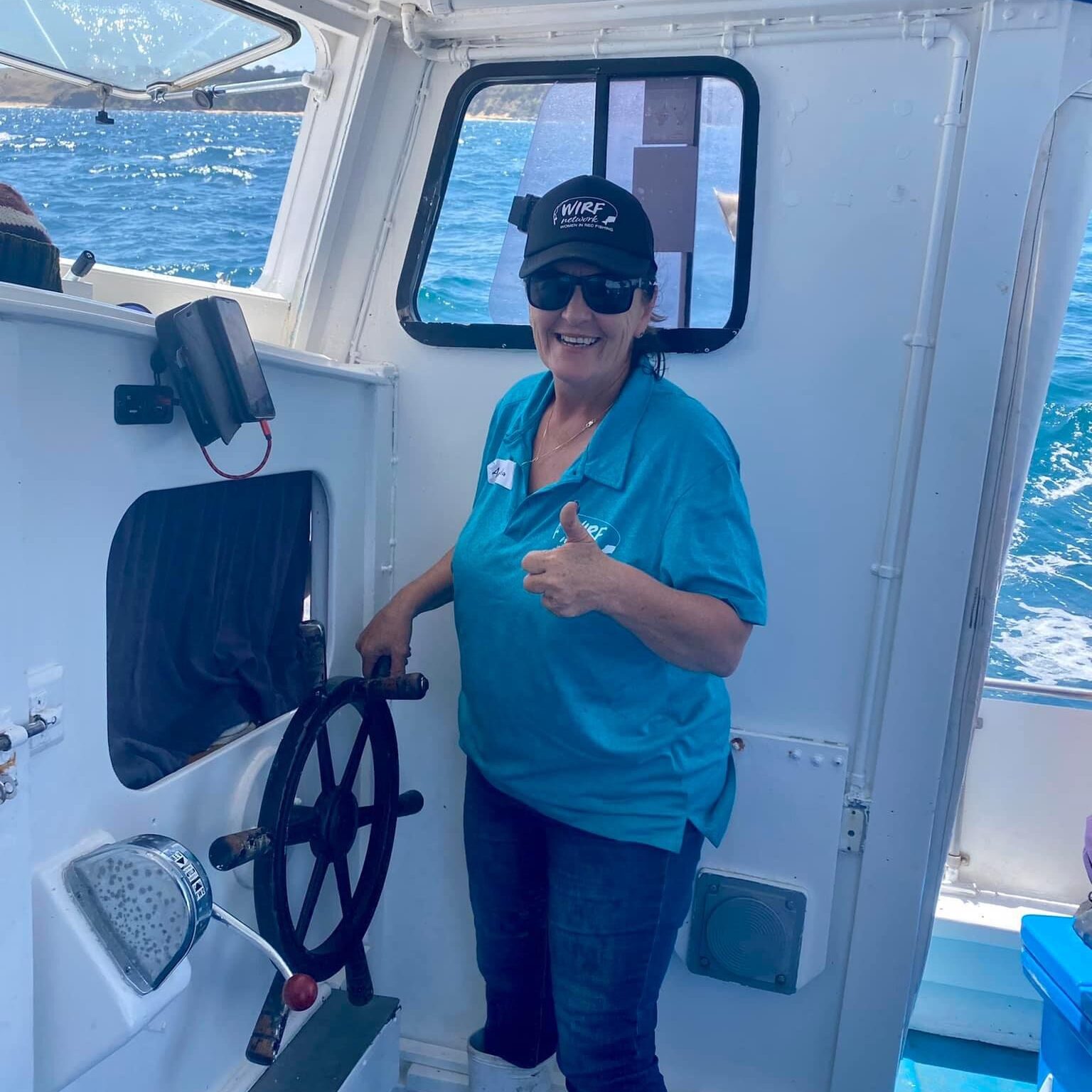If there’s one barrier that stops a lot of women from heading out on the water to fish, it’s the fear of getting seasick! Over the five years I’ve spent organising Ladies Fishing Charters, this is a common concern I’ve heard: “I want to go on a charter, but I’m scared I’ll get seasick!”
While seasickness is more common out on the high seas in big swells on our Tuna charters, I’m happy to report that I’ve only ever had one lady feel unwell inside the calmer waters of Westernport Bay. However, because I’m so keen to help women overcome their fears and conquer more adventurous ocean outings, I’ve put together this article full of tips and tricks for tackling seasickness.
These tips are based on both experience and research. Good preparation and planning can make all the difference in enjoying your time on the water and gradually building up to a point where your body and mind become “sea-worthy.” As in many cases, knowledge is a powerful tool in avoiding a potentially unpleasant experience. This article “throws up” (pun intended!) all the well-known remedies for preventing seasickness.
Testing the waters
My first piece of advice is to build up slowly—get used to boats and inshore waters on calm days before you head out to sea! Short trips on rivers and bays (while using the advice in this article) will help your body adjust to the idea of being on a moving vessel. Keep persisting and exposing yourself to these brief situations. In shallow, protected waters, the waves are much smaller, and the boat rocks less. Once you’ve mastered that and taken all of the following suggestions on board, you’ll be ready to tackle the high seas!
Before we dive into the nitty-gritty of our anti-seasickness arsenal, let’s talk about what seasickness actually is. If you guessed it’s a form of motion sickness, you’d be right! It’s caused by a sensory conflict—a discrepancy between what we see and what our bodies are experiencing. Your body may feel the rocking and rolling of the boat on the ocean, but your eyes, ears, and other senses can’t catch up! The inner ear and central nervous system no longer know where the virtual plane is. Your balance and equilibrium are disturbed by motion, such as the swell of the sea.
Inside the cabin of a rocking boat, for example, the inner ear detects changes in both up-and-down and side-to-side acceleration as your body moves with the boat. Since the cabin moves with the passenger, your eyes register a relatively stable scene. Agitated by this conflict in perception, the brain responds with an increase in stress-related hormones that can lead to nausea, vomiting, and vertigo.
I felt this way going in and out of the cabin on our offshore charters while making cups of tea for the ladies. One way around this would be to have a pre-made thermos or two of tea and keep the cabin off-limits in rough conditions! Have the cups in a box on deck ready to go. I’ll discuss the best types of tea later.
Age or strength doesn’t seem to factor into seasickness. One minute a person can be having a great time, looking relaxed, and the next minute they turn grey and go downhill quickly, heading straight for the rails!
Research shows that only 1% of people are fully immune to motion sickness, 10% suffer occasionally, and nearly 90% are susceptible to getting ill every time they head out to sea. Having said that, individual susceptibility varies greatly. For some reason, women are more susceptible than men! If you’ve ever had motion sickness while traveling in a car, plane, or on an amusement ride, then chances are you’re susceptible to seasickness too!
For the most part, recreational boaters choose to practice precautions and deal with it rather than avoid participation. While some may stick to calmer days and waters, others venture out into the high seas and oceans, prioritising prized target species. Many seasoned fishers tend to get over it the more they go out, which suggests there’s a psychological aspect to it for those with more high seas experience.
Having said that, take comfort in knowing that seasickness can and does happen to the best of seasoned boaters. Eventually, everyone becomes seasick in the worst of conditions—for some, it just takes longer than others. It really does “happen to the best of us!”
Prepare in advance
So, what can you do to avoid the dreaded ‘green state’ and become that seasoned fisher? No one wants to spend the day with a bucket between their legs while their mates haul in fish beside them! All you can do is read on and give it your best shot!
If you’re venturing out in your own boat, an obvious start would be to plan your initial trips for calmer days with less wind, chop, and swell. Look at the tides too, as wind against tide can make the waves stand up, and conditions can become very uncomfortable. Be prepared to call it quits if conditions change. A change in rhythm on the water is often what undoes people.
If you’re going out with a charter, you’re often at the mercy of the day’s conditions, and they’re unlikely to turn the boat around for one passenger. So if you’re going to give it a crack, put in the preparation and research to give yourself a red-hot chance at an enjoyable trip! Too many times, the person who gets sick is the one who didn’t take seasickness tablets until they were actually sick, didn’t have breakfast, or didn’t get enough sleep.
Preparation is key and starts long before your first trip out on the water. First, it’s about your mental state. Don’t panic! A lot of people talk themselves into seasickness. “I’ve never been out on the ocean; I’ll get sick!” Not true! Chances are you’ll actually be fine! Don’t let the fear of being sick ruin a great day at sea. Do the work in advance and go out feeling confident!
There are measures you can start taking in the days and even weeks leading up to your trip. For starters, skip an offshore trip if you’re on antibiotics, as they can interact with seasickness meds. Did you know that menstruating women are more likely to get seasick? So, ladies, try to time your trip away from your period!
Vitamin B6 in the weeks leading up to a charter can also help. It’s commonly prescribed for morning sickness in pregnant women and can help you find your sea legs too! Vitamin B deficiency is often blamed for motion sickness, so vegemite on toast, chickpeas, tuna, meat, poultry, and cereals a day or two before can’t hurt—or take supplements if that’s easier.
In the 24 hours before a trip:
- Eat healthy, light, non-spicy, non-greasy food. Mild, starchy foods are the way to go!
- Abstain from alcohol—never step on board a boat with a hangover!
- Be well-rested—a lack of sleep will undo you.
- Be well in general—going out with underlying conditions, like a bad back, will put you behind the eight ball, as your body is already sore and tired.
- Have a light breakfast (it’s really important to have something in your stomach).
- Avoid strong citrus, like high-acidic orange juice; choose apple juice instead.
- Skip the coffee if you can, avoid milk, and opt for a herbal tea like peppermint, ginger, or chamomile (more on that later).
- Stay hydrated—drink plenty of water in the lead-up to your trip.
- Take motion sickness medicine the night before your trip (get it into your system!) and one hour before you get on the boat. It’s too late to take it once you’re on the boat!
Seasickness tablets
There are lots of pharmaceutical preparations on the market—tablets, patches, and gels. Talk to your fellow anglers, doctor, or chemist to find what works for you. These preparations work by blocking the body’s need to vomit and thwarting nerve signals sent from the inner ear to the brain.
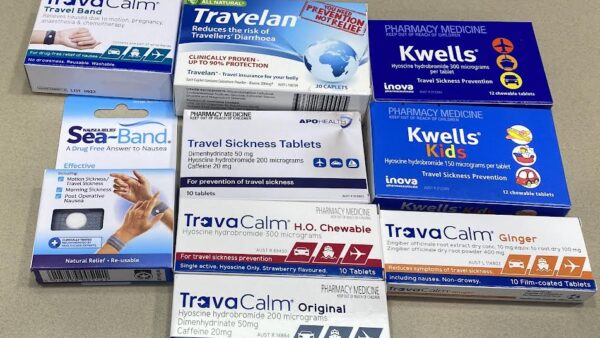
It’s worthwhile to pre-test these preparations at home, well before your first trip, to see if they have a drowsy side effect. You don’t want to be falling asleep in the middle of your fishing charter! Personally, I take Kwells, and they don’t make me drowsy. Another WIRFAB leader and good friend, Jo Fyfe, swears by a travel sickness gel you put behind your ears. This Scopolamine Hydrobromide is distributed online by the Green Dispensary, and it’s made in Adelaide.
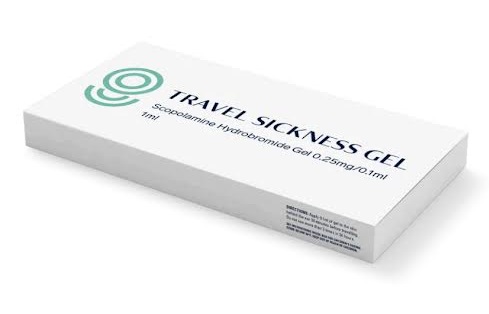
There are also many folk remedies you can use while out at sea. I find a mix of both Kwells and old-fashioned natural ingredients like ginger to be a very effective combination.
Sea bands
Sea bands are designed to stimulate the P6 median nerve acupressure point. This is a target point to combat nausea and vomiting and stems from traditional Chinese medicine and acupuncture. Sea bands are basically soft, elasticised wristbands with a small, smooth button that’s positioned over the P6 point. They are effective when worn on both wrists. They’re safe for kids, have no side effects, and can even relieve headaches. You can wear them from the start of a trip or when symptoms occur.
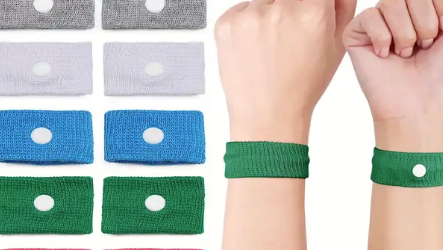
To manually find the pressure point, place your index, middle, and ring fingers of your right hand on the inside of your left wrist, starting just under the crease. The P6 point lies just beneath your index finger, between the tendons. You can manually stimulate it by applying firm pressure on even just one wrist for a few minutes or until symptoms pass. Massage this point between your tendons, about three fingers above your wrist, for a couple of minutes on each arm for best results.
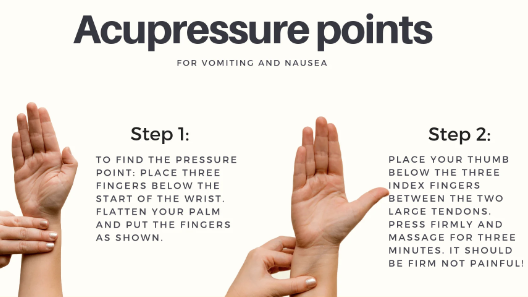
THE IMPORTANT DO’S AND DON’TS FOR WHEN YOU’RE OUT ON THE BOAT:
Do:
- Sit facing forward in the direction the boat is travelling (especially if trolling lures all day!)
- If you feel sick look at the horizon and focus on a distant object- your brain needs to make sense of what’s moving & what’s not
- Better still if you feel unwell and can take the helm, do it! The focus on direction and where the boat is headed will help restore your equilibrium.
- Snack – keep your stomach a little full with light dry foods like crackers, cheese, pretzels, nuts, dried fruits, green apples, sandwiches, muesli bars and instant soups.
- Listen to music to relax and distract you
- Take deep slow breaths from your stomach to help reduce nausea
- Avoid smells like diesel fumes, cigarette smoke and smelly bait
- Keep your head in the fresh air and don’t overheat – take regular breaks from the sun
- Wear a hat and sunnies and seek cover in hot, sunny conditions
- Try to keep your balance while standing free. It’s supposed to stimulate your central nervous system and help it adapt quickly. (Have something nearby to grab on to should you need it!)
- Sit in the middle of the boat where there is less movement. Less movement & rocking = less sickness!
- Carry a plastic ‘sick bag’ to eliminate any panic. If you do need to be sick and don’t want to hang over the side of the boat. Those biodegradable dog poo or kitchen compost bags are perfect.
Don’t:
- Get dehydrated! Keep sipping water, herbal tea, or cola.
- Drink alcohol, coffee, or milky drinks (except cola or ginger ale).
- Go below deck or into the cabin, unless absolutely necessary.
- Read or look at your phone for extended periods.
- Stay near someone who is sick if you can help it.
Ginger: an angler’s best friend!
Ginger is one of the most effective natural remedies for seasickness, known for its anti-nausea properties. You can consume it in various forms—ginger biscuits, tea, ale, or even raw ginger. It works best as a preventative and can help in managing the symptoms once they appear.

Home made Ginger tea recipe
Ginger works best as a preventative. Make a thermos or travel mug of bought or home brewed Ginger Tea and sip it out to sea!
Recipe: Grate 1-2 teaspoon of fresh ginger and steep in a cup of hot water. Add a squeeze of lemon & a spoonful of honey
Other remedies
Peppermint and Chamomile Teas are great to sip on too and great to stave off nausea. I’ve heard chupa chups, barley sugars and minties are great to chew on. Avoid strong overpowering peppermints and chewing gum. Avoid super sugary lollies.
And finally, when all else fails…
Even after taking all these precautions, seasickness can still strike. But don’t be disheartened; it usually passes after a few hours. The important thing is not to let it deter you from future trips. The more you get out on the water, the better your body will adapt, and before long, you’ll be a seasoned fisher, enjoying every moment on the boat!

